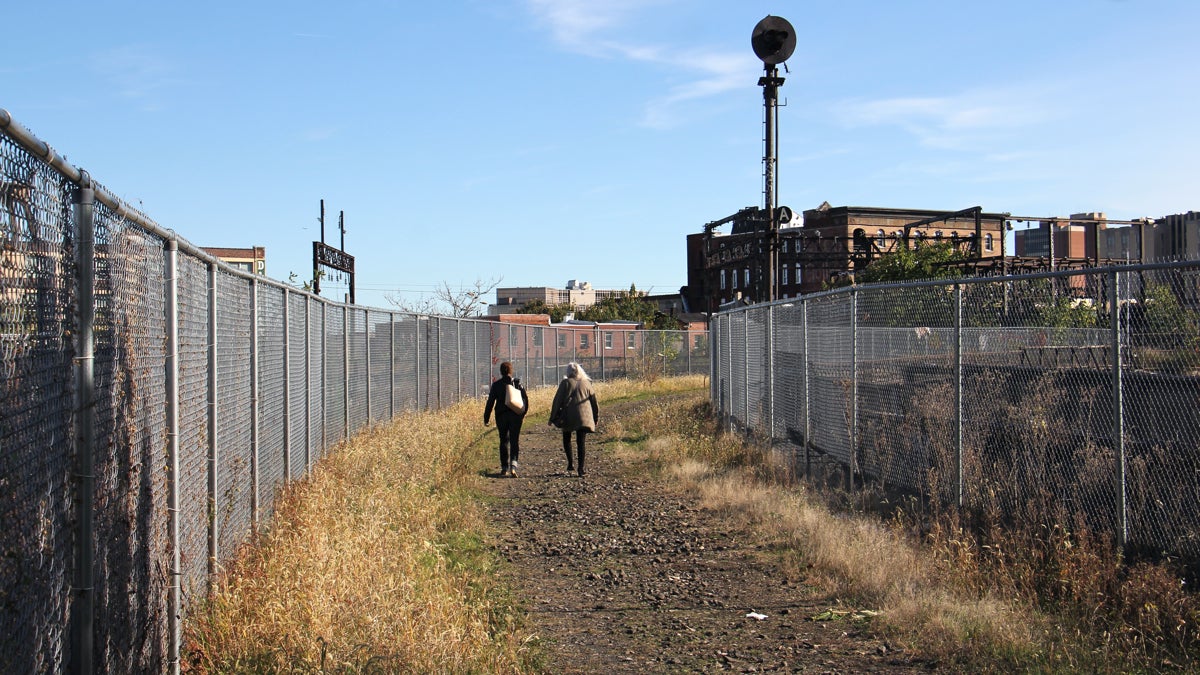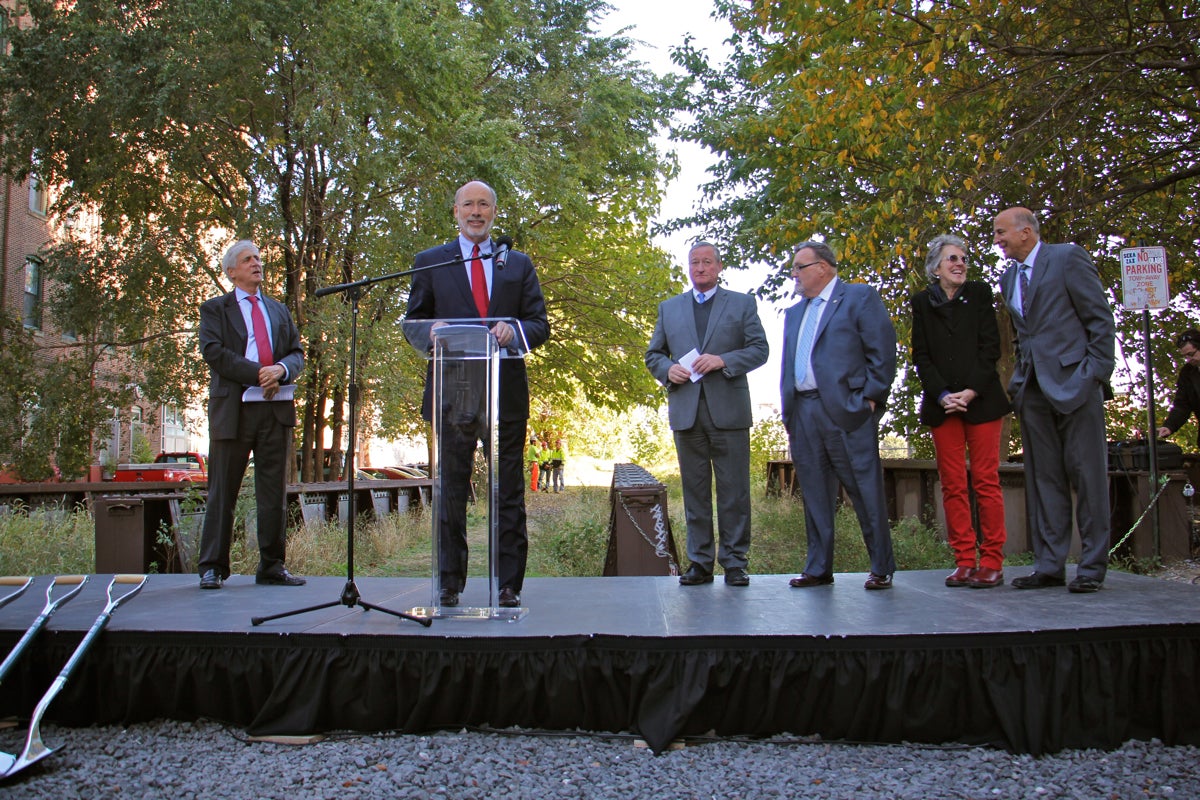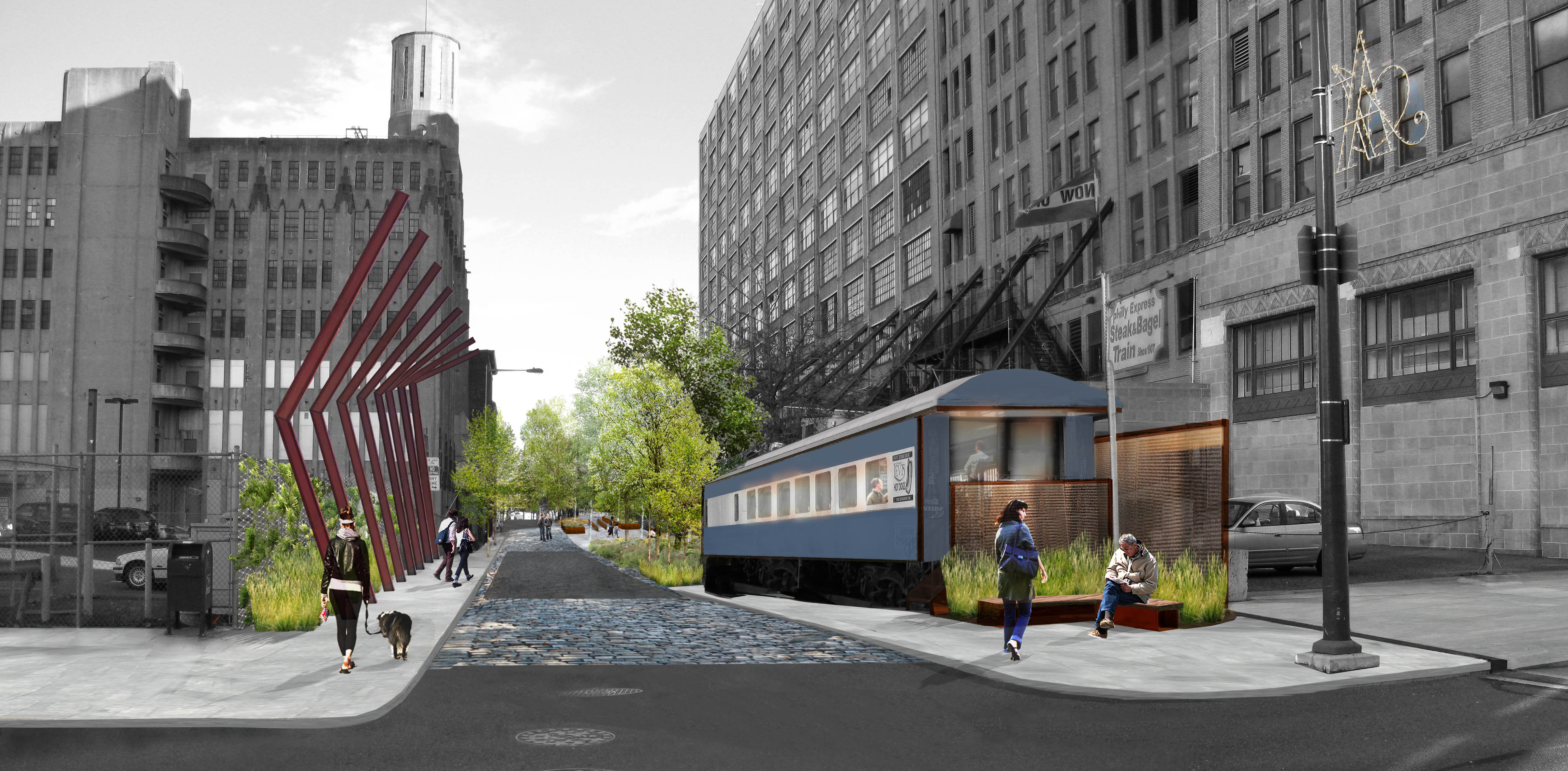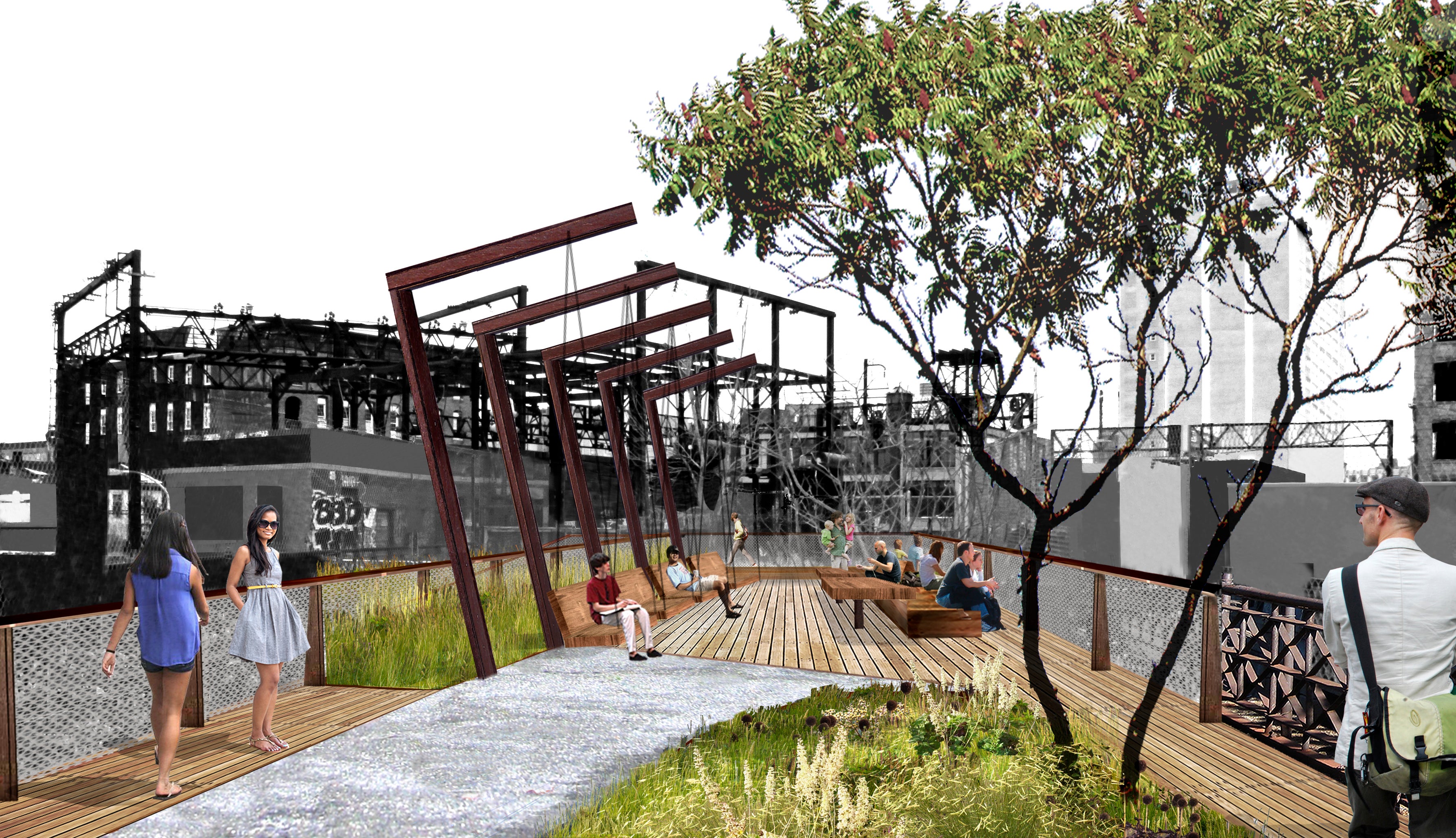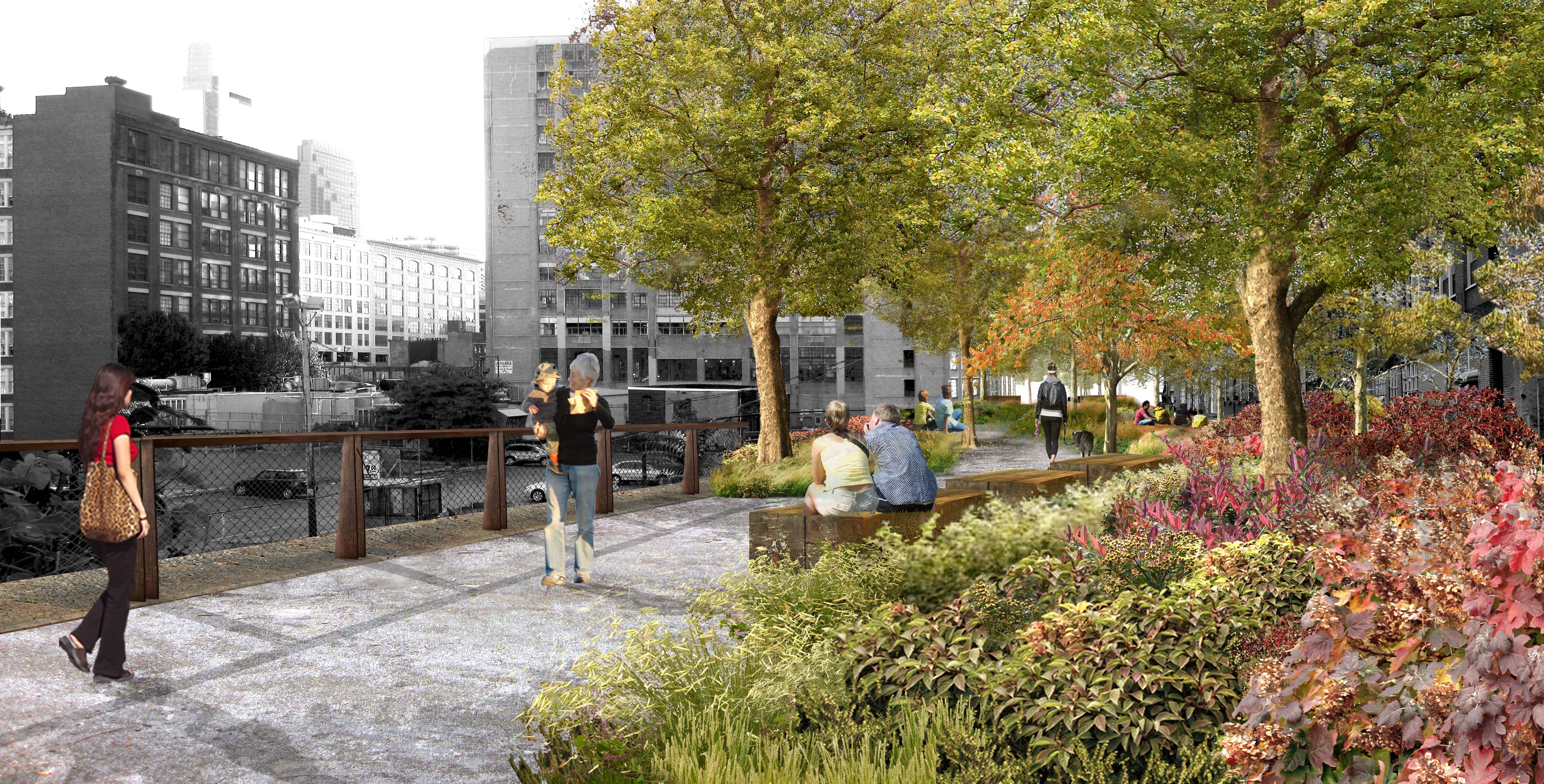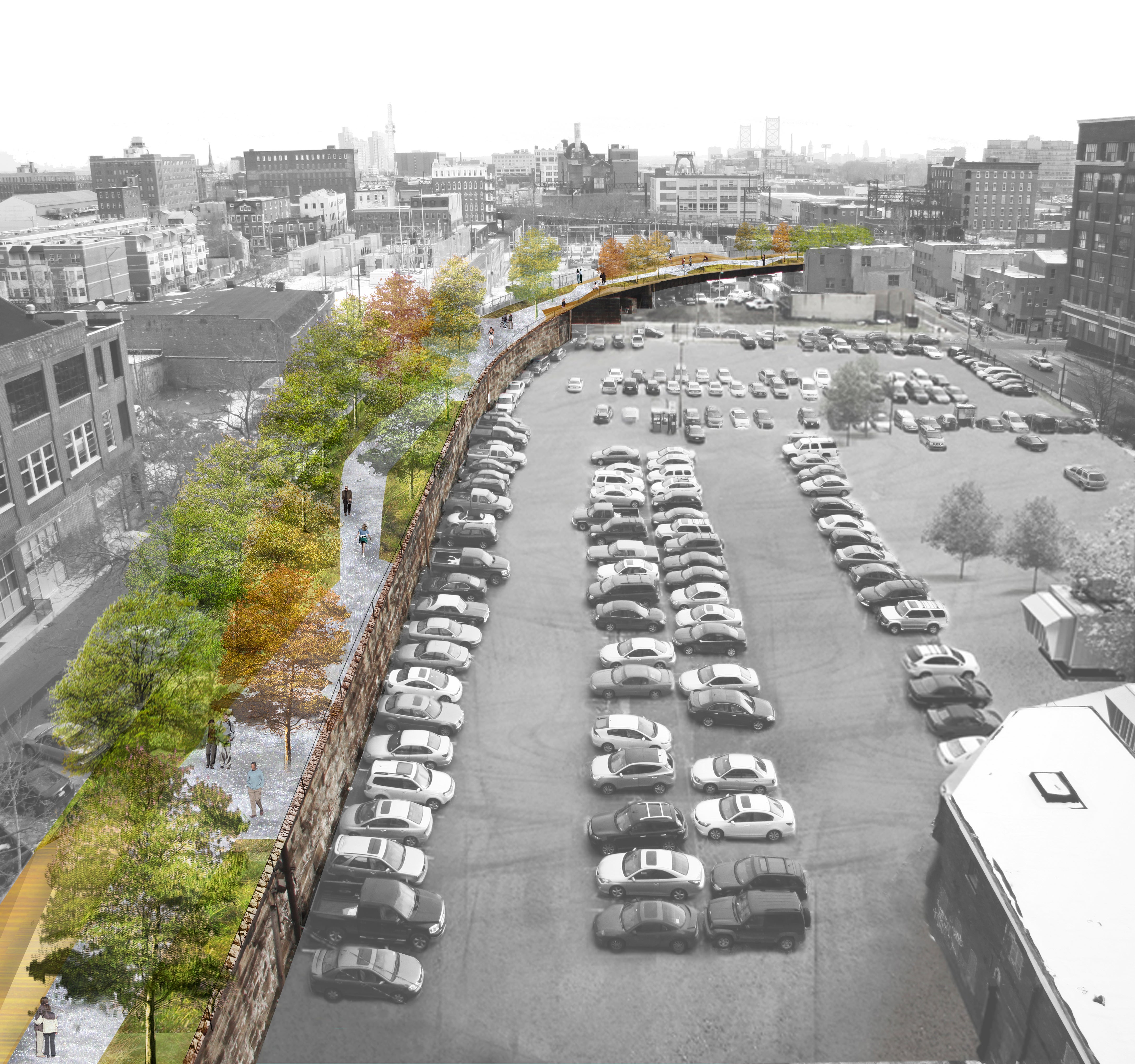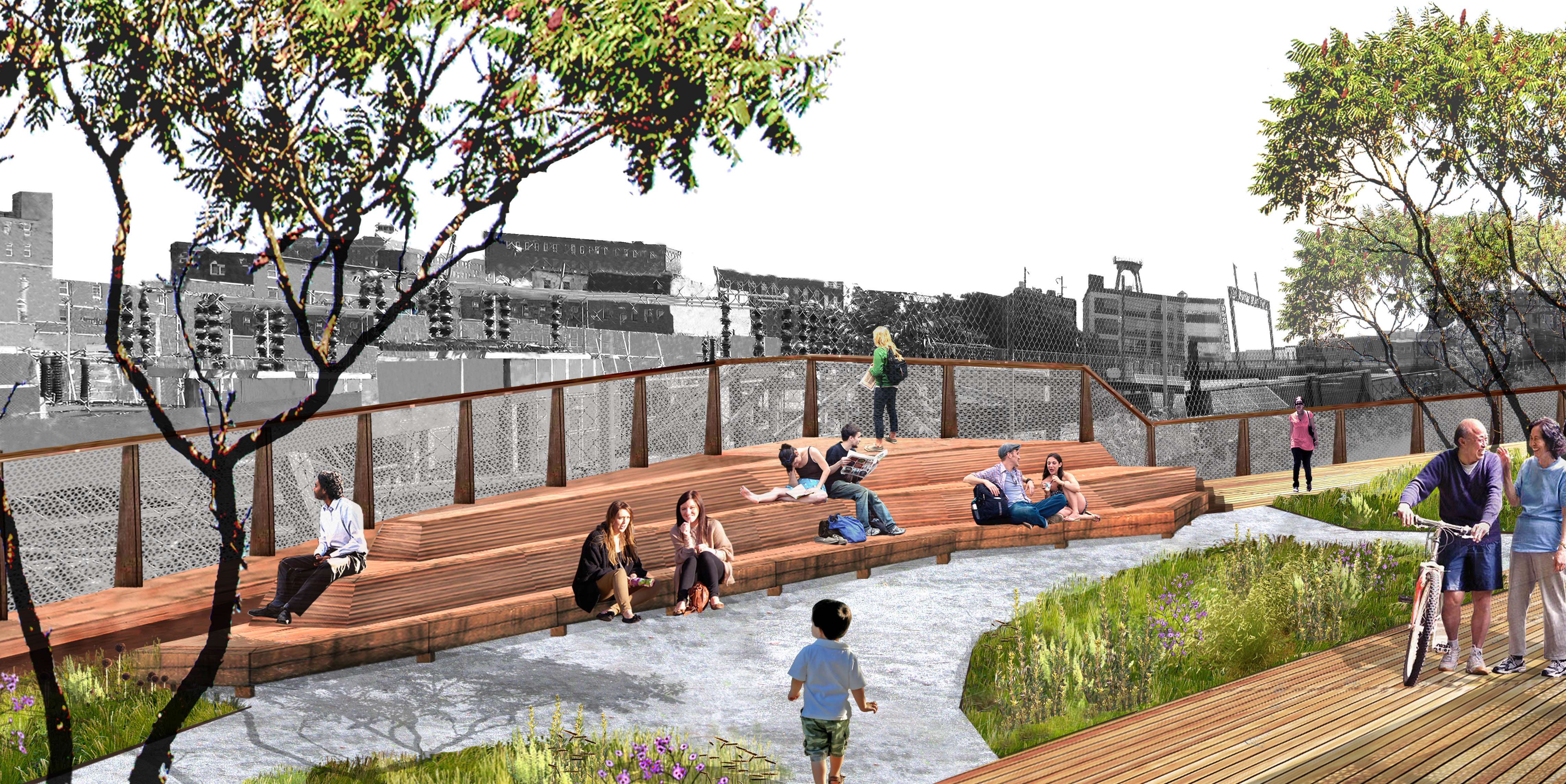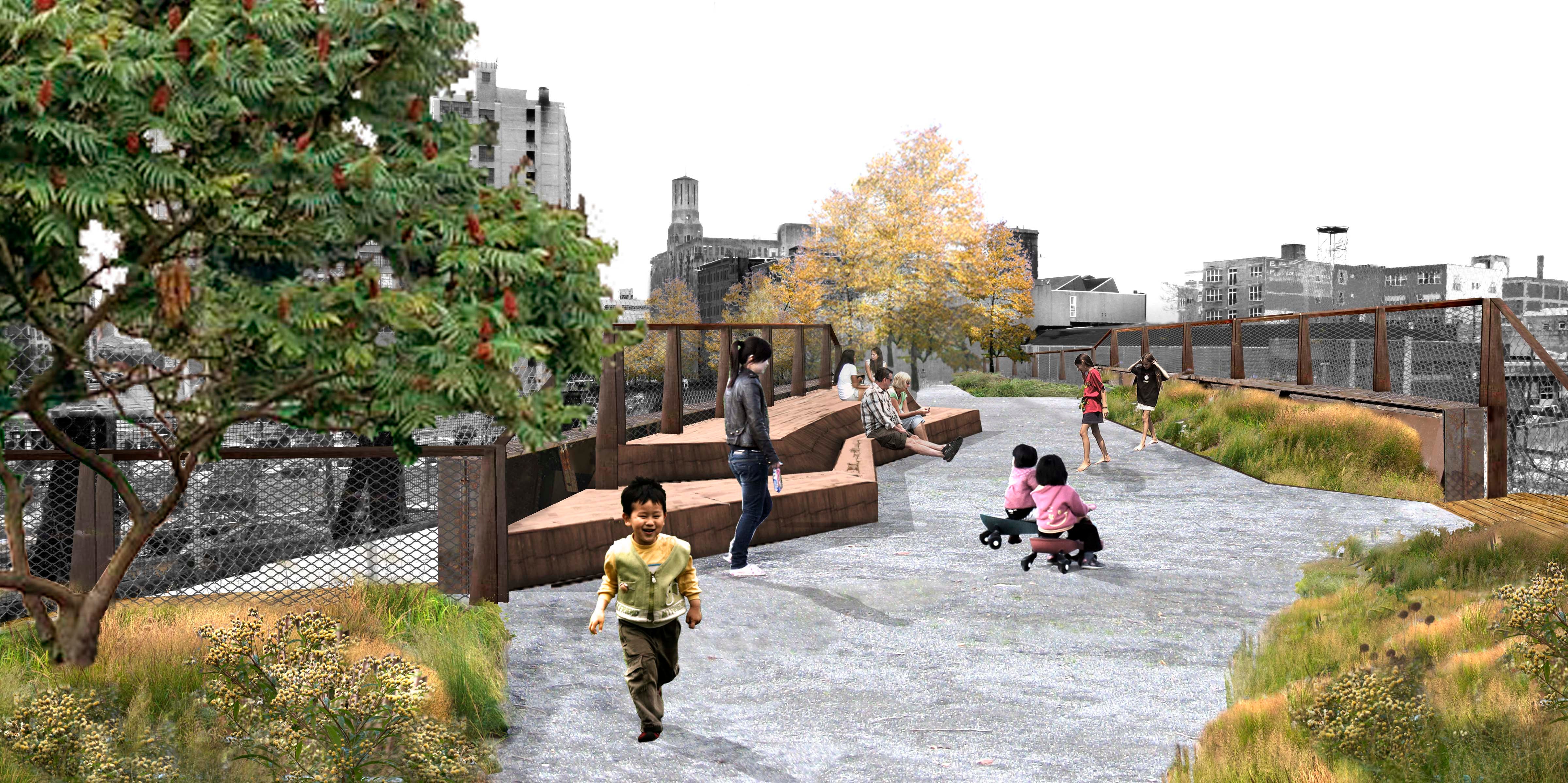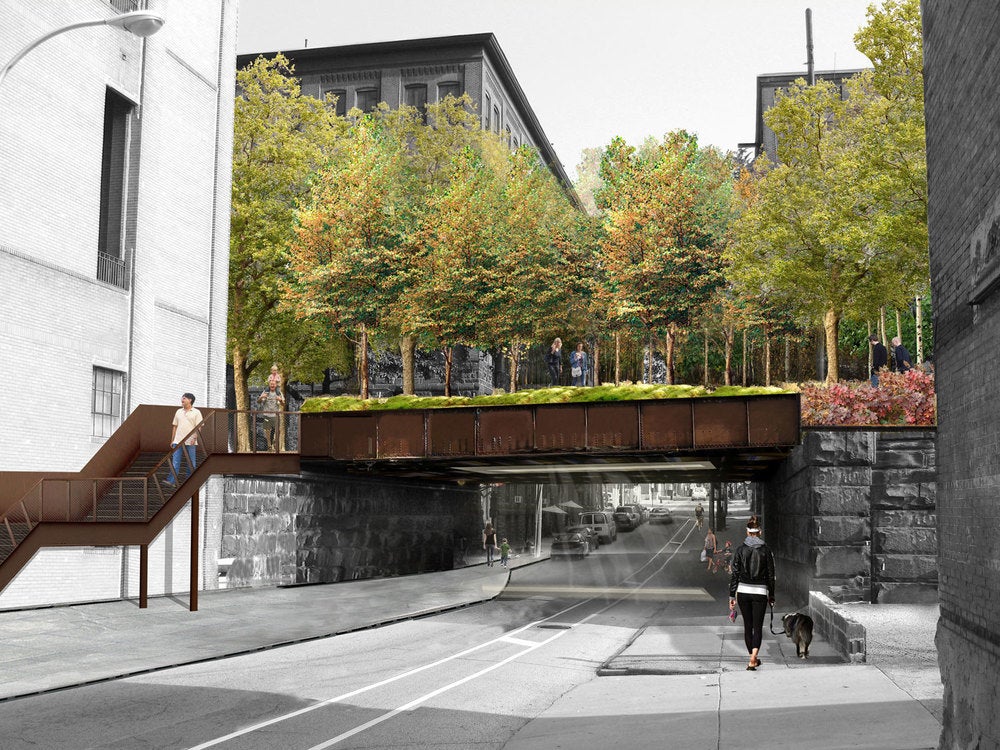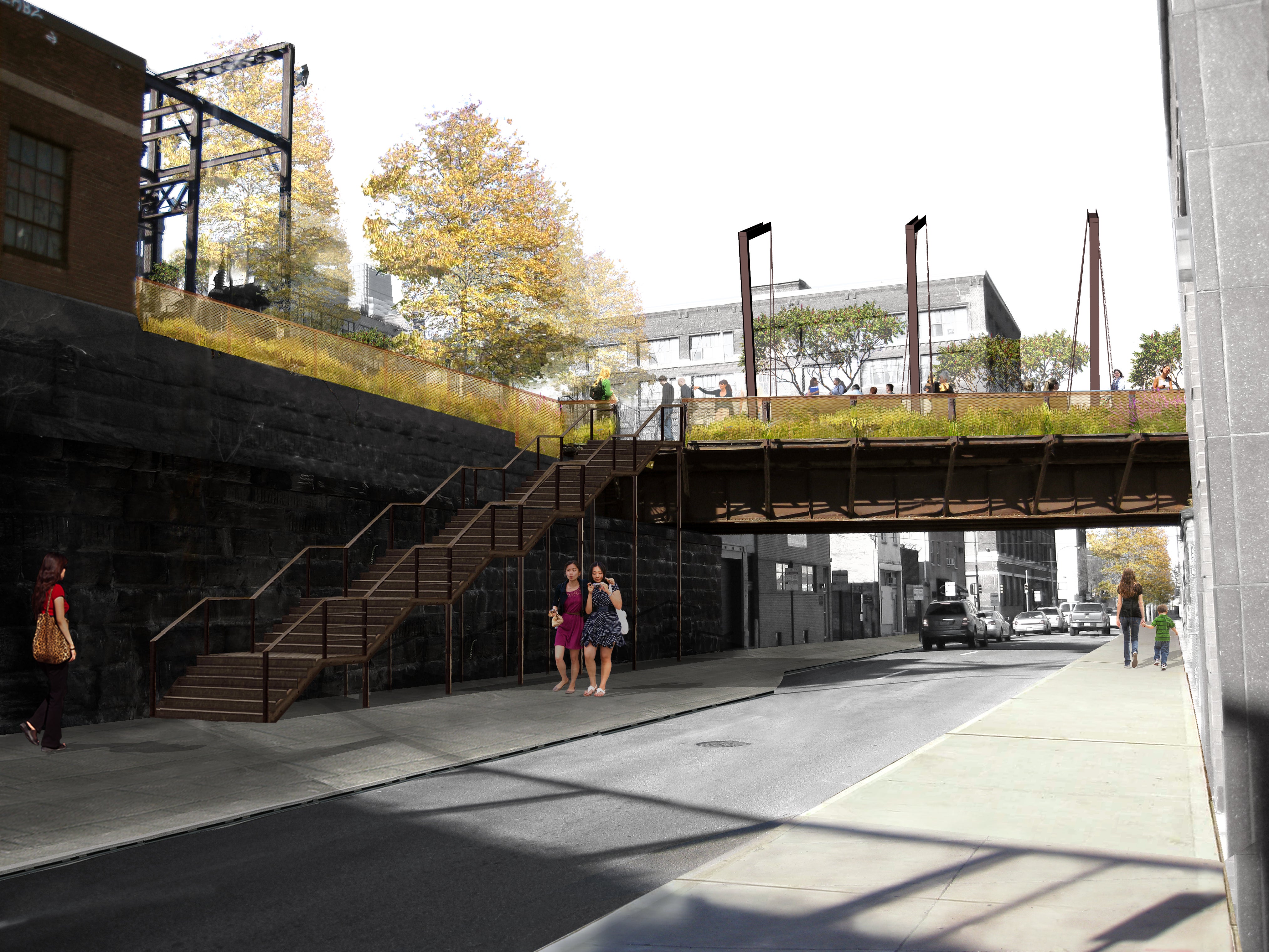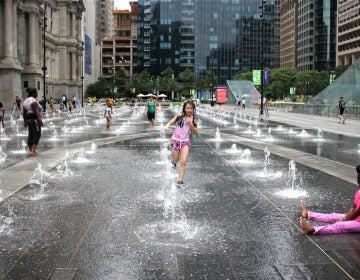First phase of Rail Park construction underway

On Monday afternoon, a large crowd clustered around the mouth of the Reading Viaduct for the long-anticipated groundbreaking of a project that would transform the long defunct railway into a public park.
“It takes 9 months to make a baby but it sometimes it takes 9 years to make a project,” said Mayor Jim Kenney before the crowd.
The linear Rail Park will someday eventually stretch three miles, connecting neighborhoods from first Northern Liberties to Brewerytown. Monday’s groundbreaking marked the opening of construction on the one-quarter mile of the first phase in the Callowhill neighborhood, with a price tag of $10.3 million.
The Reading Viaduct park plan emerged in the early 2000s and gained momentum in 2009 when the Center City District (CCD), and its influential president Paul Levy, became enamored of the idea and ultimately became a partner to help manage the project. The handles of the ceremonial shovels at Monday’s groundbreaking were sheathed in the business improvement district’s signature teal color and emblazoned with its emblem.
Despite the enthusiastic support of Levy, and Philadelphia politicians like state representative Mike O’Brien and Councilman Mark Squilla, funding issues have bedeviled the Reading Viaduct Park for years. The most recent hiccup came earlier this year when the rail park became a casualty of the budget impasse in Harrisburg, and $3.5 million in potential Redevelopment Assistance Capital Program (RACP) funds were held in limbo. When funds were finally unfrozen this call the viaduct project was one of only two proposals in the metropolitan area to get the full amount of funding requested—a sign of its popularity in both Philadelphia and in the governor’s office.
“I am here to wish everyone a happy Halloween, we are welcoming Governor Tom Wolf and Rep. O’Brien and mayor Jim Kenney who are bringing us treats and no tricks today,” said Levy in his introductory remarks.
Levy took the opportunity to officially announce that of the six contractors who bid this summer on construction for this phase of the park project, the New Jersey firm AP Construction won the contract. (Its only other office is in Philadelphia.) He said that AP would be committing 20 percent of construction work to minority-owned businesses and 12 percent to female-owned businesses.
Work began Monday afternoon and Levy projected that, barring further complications, a ribbon cutting could be expected by January or February of 2018.
The official groundbreaking also featured the rollout of a crowd-funding program, fundtherailpark.org. Within an hour of the press conference, three donors contributed $375 to the website’s $50,000 ask.
“To pay their [AP Construction’s] bills, I have to confess we still have to raise $800,000,” said Levy. “I didn’t tell them that before I invited them. …We’ve decided to take the risk because I’ve never seen a project with so many supporters.”
Governor Tom Wolf spoke at the groundbreaking as well, asking how many of the windbreaker-decked crowd had visited the High Line in Manhattan. About half the crowd raised their hands.
“The High Line in New York, when I’ve been on it, has always been crowded,” said Governor Wolf. “Economic development has sprouted up all along the High Line and started with a lot less than what we started with here. This is beautiful now and it’s going to be amazing when it is finished.”
Rep Mike O’Brien and Sarah McEneaney, president of Friends of the Rail Park, spoke as well. Then the assembled honorable tucked into the pile of dirt imported from upstate Pennsylvania—in Levy’s words—due to the toxicity of the soil on the viaduct, which is one of the reasons for the project’s substantial cost along with the lead paint on the steel bridge.
Afterwards the crowd milled around, exchanges hugs and congratulations beneath the old industrial buildings that shadow the mouth of the viaduct. Men in neon construction jackets were already striding down the viaduct and beginning work.
“We’ve been looking forward to it for so long,” said Geni Klein, board member of the Fairmount Community Development Corporation. She has no fears that the Rail Park would win over fans, even though it is separated from Center City by the Vine Street Expressway and in the midst of a neighborhood with a relatively small residential population. “People can read about it one hundred times, but when they finally see it that’s when they’ll get really excited about the Rail Park.”
Click through to see renderings of Rail Park Phase 1:
WHYY is your source for fact-based, in-depth journalism and information. As a nonprofit organization, we rely on financial support from readers like you. Please give today.



